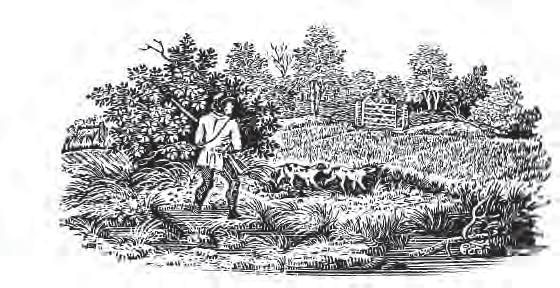
13 minute read
History of birdwatching and Suffolk, Part 1 ...............Steve Piotrowski
Editor: This is the first of a two-part history of birdwatching in the county. In part 2 Steve will consider the impact of various technologies over the last twenty years and speculate on its likely impact on birdwatching in the future.
Steve Piotrowski
The history of birdwatching and its relevance to Suffolk
Introduction Some of Suffolk’s place names reveal our forebears’ early connections to birds, but for the most part their interest was of a utilitarian nature (mainly food) rather than any general fascination with ornithology. Observing birds for their aesthetic value can be traced to the late-18th Century, especially through the works of Gilbert White, Thomas Bewick, George Montagu and John Clare.
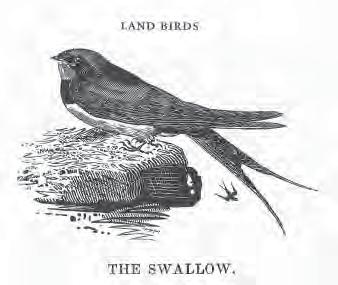
However, locally there is little written work about birds and authors from this period and researchers of the time gleaned information from general ornithologies and references from journals and books whose subjects ranged from country sports to travel, zoology and even cookery. Norwichbased ornithologist Sir Thomas Browne’s reference to Spoonbills nesting upon the tops of high trees at Trimley, in about 1668, belies an early interest. Parish accounts also yield clues to the status of the county’s avifauna, especially for species classified as vermin, when bounties were placed on their heads.
An early ‘birdwatcher’?
The first ornithological account, based specifically on Norfolk and Suffolk, was written by Rev. Revett Sheppard and Rev. William Whitear in 1824-25. Unfortunately, Whitear did not live to see the publication of his work as he was accidentally shot whilst tracking poachers in 1826. A total of 217 species was listed and the work basically consisted of birds killed in the two counties. Although the study of birds and natural history became fashionable in Britain during the Victorian era, it was mainly collection-oriented with eggs and, later, skins being the artefacts of interest. Suffolk had some of the most obsessive collectors. A number of authors, such as T. M. Spalding (1846) and Tuck (1891), included bird lists in their writings.
One of the most fascinating accounts of the carnage meted out to the local bird life was provided by
Rev. Julian George Tuck, President of the SNS and author of the ‘Ornithology of Suffolk’ (1891)
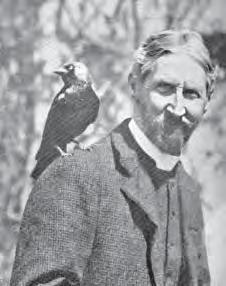
Nicholas Fenwick Hele in his Notes or Jottings about Aldeburgh, Suffolk (1870 and 1890). Rev. Dr Churchill Babington (1884-1886) catalogued specimens of birds that had been killed in Suffolk and gave a brief summary of the distribution and status of each species that had been recorded.
God, science and bird protection
John Ray (1627-1705) has been referred to as the father of English natural history and was responsible for the classification of species. He rejected preconceived ideas on the division of species, which had previously been based on similarity, function, habits and habitat. Instead he based his classification on form and divided the birds into land and water species, further dividing them according to the shape of bill and feet. However, he had to compete with folklore, superstitions and - most importantly - needed to ensure that he didn’t upset the Church. After all, it was during his lifetime that Galileo was imprisoned after falling out with the Jesuits by daring to suggest that the Earth didn’t stay still, but orbited the sun and not the other way round! This was contrary to what was written in the Old Testament. In the mid-1600s it was still widely believed that a single Magpie meant sorrow and to hear the call of the Raven or see a Barn Owl at your window would result in death. Ray spent most of his life in Black Notley in Essex, but also had a Suffolk connection as “a few” of his moths were collected at Heveningham (Morley 1937).
Something of a battle between scientists and birdwatchers started in the late 17th Century and continued up to the early 20th. Birkhead (2008) covers this on p.44 of his ‘The Wisdom of Birds’ with a perfect diagram and text towards the end of the book’s first chapter:(see right).
In summary, between 1700 and 1900, ornithologists were divided into two groups. One group were the “systematics” who were considered to be the true ornithologists - the professionals and the scientists whose interests lay with taxonomy and classification. The other group were the “field ornithologists” who studied behaviour and the ecology of birds. The latter group were considered by the “systematics” to be dilettantes and amateurs, with their roots in physic-theology rendering their work worthless! Many field ornithologists of that day were clergymen and teachers. The divide began after Ray and the diagram in ‘The Wisdom of Birds’ shows which side of the line the interests of our most eminent ornithologists lay. A German ornithologist named Erwin Stresemann is credited in bringing the two strands of bird study back together in the 1920s. Birkhead (2008) said that Stresemann “revolutionised ornithology, making it scientifically respectable and part of mainstream zoology”.
David Lack
Erwin Stresemann
1900
Huxley, Selous Hertert, Rothschild Darwin Sharpe, Gould
Field Ornithology Systematics
Latham Montagu, Bewick Yerrell
1800 White
Linnaeus
Tunstall
Edwards
1700 Pernau
John Ray
Willughby Faultrier
1600 Aldovandi
It was only in the late 19th Century that the call for bird protection began to lead to the rising popularity of observations of living birds. The Royal Society for the Protection of Birds (RSPB) was formed to protect birds from the growing demand for feathers for fashion and especially the millinery trade.
The term “birdwatching” appeared for the first time as the title of a book “Bird Watching” by Edmund Selous in 1901. Selous (1857-1934) was a British ornithologist and writer. He was the younger brother of big-game hunter Frederick Selous. He practised as a barrister only briefly before retiring to pursue the study of natural history and literature. He married in 1886 and moved to Wiesbaden, Germany with his family in 1888 and then to Mildenhall in 1889. Selous started as a conventional naturalist, but developed a hatred of the killing of animals for scientific purposes and pioneered birdwatching as an alternative method of study. He became a strong proponent of non-destructive bird study as opposed to the collection of skins and eggs. In his book, he said: “For myself, I must confess that I once belonged to this great, poor army of killers, though happily, a bad shot, a most fatigable collector, and a poor half-hearted bungler, generally. But now that I have watched birds closely, the killing of them seems to me as something monstrous and horrible; and, for every one that I have shot, or even only shot at and missed, I hate myself with an increasing hatred. I am convinced that this most excellent result might be arrived at by numbers and numbers of others, if they would only begin to do the same; for the pleasure that belongs to observation and inference is, really, far greater than that which attends any kind of skill or dexterity, even when death and pain add their zest to the latter. Let anyone who has an eye and a brain (but especially the latter), lay down the gun and take up the glasses for a week, a day, even for an hour, if he is lucky, and he will never wish to change back again. He will soon come to regard the killing of birds as not only brutal, but dreadfully silly, and his gun and cartridges, once so dear, will be to him, hereafter, as the toys of childhood are to the grown man.” How poignant is this statement! The rising popularity of the car increased the mobility of birdwatchers and this made new locations accessible to those seeking out birds that were not to be found in their local areas. Networks of birdwatchers in the UK began to form in the late 1930s under the British Trust for Ornithology (BTO). The BTO saw the potential to produce scientific results through the networks, unlike RSPB, which, in common with the Audubon Society in America, stemmed from the bird protection movement. The British Ornithologists’ Union (BOU) had a focus mainly in collection-based taxonomy and changed its focus to ecology and behaviour only in the 1940s. The BTO movement towards ‘organized birdwatching’, was not favoured by the RSPB, which claimed that ‘scientification’ of the pastime was ‘undesirable’. However, this stand changed in 1936 when Tom Harrison and others took over at the helm of RSPB. Harrison (1931) had been instrumental in the organization of pioneering studies such as those of the Great Crested Grebe.
Increased mobility of birdwatchers ensured that books such as those in the Where to watch birds series became best sellers. Initially, birdwatching was a hobby largely confined to developed countries such as the United States of America and the United Kingdom. Since the second half of the 20th Century, an increasing number of people in developing countries have engaged in this activity. Trans-national birding has played an important role in this, as citizens from developing countries who birdwatch have often developed this interest from being influenced by foreign ornithologists on birding visits. Most modern-day birdwatchers make regular trips abroad in search of birds.
Patterson and his Breydon houseboat
Field guides and optical aids
The identification of birds, once thought impossible without a specimen, became easier with the emergence of optics and field identification guides. Early authors gave few clues as to the optics they used to help them identify the birds in their districts.
Arthur Patterson (1857-1939) kept detailed notes about the flora and fauna of the Great Yarmouth region and used to write in the Eastern Daily Press under the pseudonym John Knowlittle. He had a houseboat moored on Breydon Water where he befriended the old “Breydoners” such as the wildfowlers, poachers and eel catchers of the late 19th Century. His great granddaughter, Beryl Tooley, describes his life beautifully in her biography “John Knowlittle” (1985) in which a photograph, dated 1887, shows Arthur clutching a pair of binoculars. The author describes how her great grandfather bought a new pair of Zeiss binoculars in 1905. The Porro prism binoculars design was invented by the Italian optician Ignazio Porro and consists of a double prism Z-shaped configuration to show a proper image of the subject. Porro patented this technology in 1854 and his design was enhanced by Carl Zeiss in the 1890s. The first high-quality modern binoculars were sold in 1894, a product of the optical design of Ernst Abbe and the production techniques of Carl Zeiss. These antiques gave very sharp views and are still one of the most attractive binoculars ever made.
It is interesting that Patterson was eager to obtain a pair of these early binoculars and it is quite conceivable that he was East Anglia’s first ‘real’ birdwatcher. Patterson used his houseboat as a hide and there were rumours of a large telescope mounted in one corner. However, there is no mention of this in Tooley’s book. Patterson’s binoculars could be the first reference to optics being used to aid bird identification. Further references came in a book published in the USA entitled: Birds through an Opera Glass (1889) by Florence Bailey - this was also the earliest field guide. Recording, Local Clubs, Societies, Bird Reserves and an Observatory
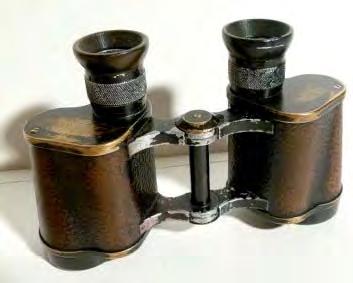
Interest in migration increased rapidly during the late 19th Century and, in 1909, ringing schemes were introduced. The founding of the Suffolk Naturalists Society (SNS) in 1929 was a milestone in the study of natural history in the county and it gave local ornithologists an outlet to publish their sightings. The society encourages and organises biological recording within the county and publishes papers, notes and observations in its annual Transactions.
In 1937 the one surviving ringing scheme was taken over by the BTO. The Ringing Office, originally housed at the Natural History Museum in London, moved to Tring in 1965 and thence to Thetford in 1991.
Many of Suffolk’s eminent naturalists of the early 20th Century were based in north-east Suffolk and the Lowestoft Field Club (LFC) was founded in 1946. The Dingle Bird Club followed in 1953 and was the first group in Suffolk to concentrate specifically on bird migration, with studies that have continued to this day. The Suffolk Ornithologists Group (SOG) was founded in 1973 with the aim of promoting general interest in the active conservation of Suffolk’s wild birds, to carry out field studies and to record and publish observations. This was soon followed by the creation of the Suffolk Biological Records Centre in 1974 to specifically collate and store records for biological and geological groups concerning Suffolk.
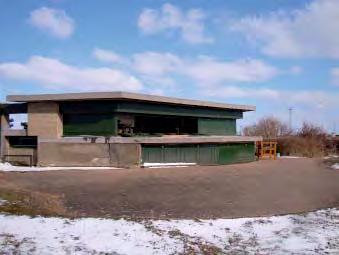
Landguard Observatory
Following years of planning, Landguard Bird Observatory was founded in November 1982, with its headquarters in the wartime fortifications at Landguard Point, Felixstowe. Since its formation, the observatory has been manned daily by an experienced warden and ringer, often backed up by a ringing team, throughout migration periods.
Local reports and county avifaunas
Dr Claud B. Ticehurst wrote the county’s first definitive avifauna in 1932. Thirty years passed before an update was written by W. H. Payn, which was revised in 1978, and Suffolk’s latest avifauna was published in 2003 (Piotrowski 2003). The first volume of the Transactions of the SNS featured a paper on Suffolk shorebirds and highlighted one of the great menaces of the 20th Century - oil pollution. The SNS continued to publish its Transactions throughout the Second World War, although notes and observations were limited due to access to the coast, in particular, being very much restricted. The LFC’s first annual report covered the period from February 1946 to January 1947 and included a comprehensive systematic list of birds seen in the Lowestoft area. The SNS published the first countywide Bird Report as a section of the Transactions in 1950. There were 84 contributors to this first edition, but obviously the novelty value diminished as the number decreased to 53 the following year. During the early years of the Suffolk Bird Report, there was great emphasis on recording and ornithologists were encouraged to estimate the numbers of birds at the sites that were visited. Counts on estuaries were not co-ordinated and were largely carried out on an ad hoc basis and the optical aids were inadequate for the task. In consequence, many sites relied heavily on the skill of the observer in identifying birds and it is obvious from the consistent round-figure totals that large gatherings were often the observer’s
‘best guess’. Seabird sightings were extremely rare. The SOG initially published papers, field notes and sightings in a bi-monthly bulletin and, as standards in the quality of production improved, the journal moved to quarterly, being published as The Harrier, which today is considered to be one of the best regional newsletters in Britain. As a result of the continuing upsurge in interest, and the a demand by birding i members of the SNS, the annual Bird Report was again issued as a separate publication, but now separate from the Transactions. Vignettes, drawn by accomplished Suffolk artists, were introduced and became a feature of the reports but, otherwise, there were few major changes in format during these embryonic years. Standards improved rapidly throughout the 1980s and colour photographs were added for the first time in 1985. About 437 observers forwarded bird records for publication in 20101, which is more than eight times the number who did so in the early 1950s. wisetherewerefew

Acknowledgements: Thanks are due to Phil Brown for his comments on earlier drafts, John Grant and Matthew Deans for proof-reading the manuscript. More information on the life histories of many of those mentioned in this paper can be gleaned from the free online encyclopaedia “Wikipedia”, which formed the principal source for each character described. I am grateful to the anonymous authors for providing this information.
References: Babington, C. 1884-1886. Catalogue of the birds of Suffolk. John Van Voorst. London. Bailey, F. M. 1899. Birds through an opera-glass. The Chautauqua Press, New York. Birkhead, T. 2008. The wisdom of birds. Bloomsbury Publishing Plc. London. Harrison, T. H. & Hollom, P. A. D. 1932. The Great Crested Grebe Enquiry - 1931. Brit. Birds, 26: 62-92.
1 In 2011, while this total was down to 325, it was still considerably more than the 1950s.










